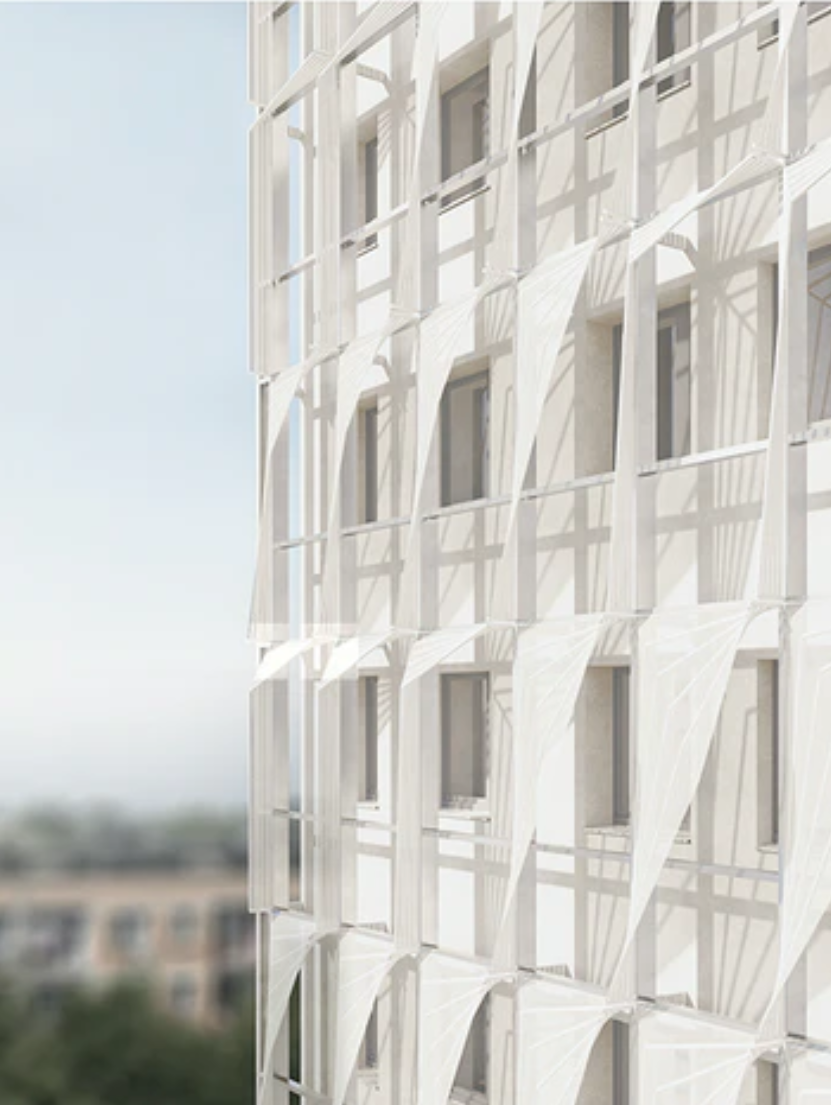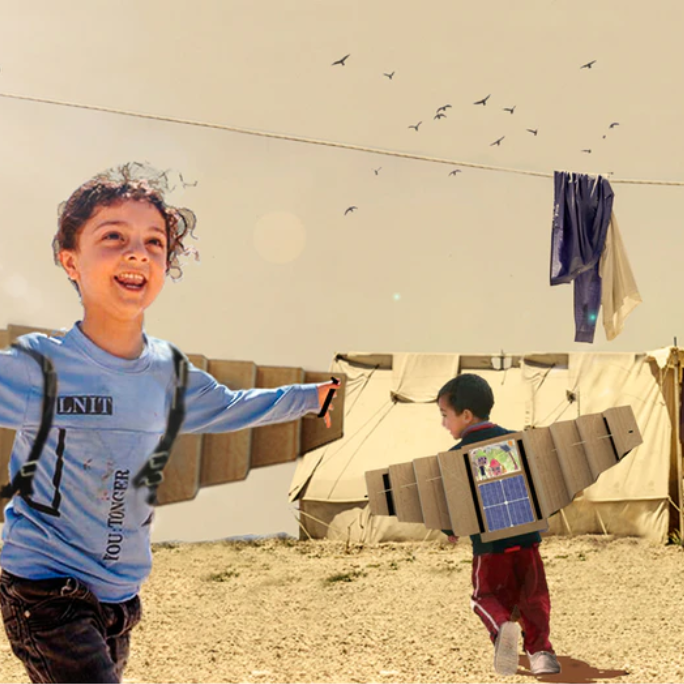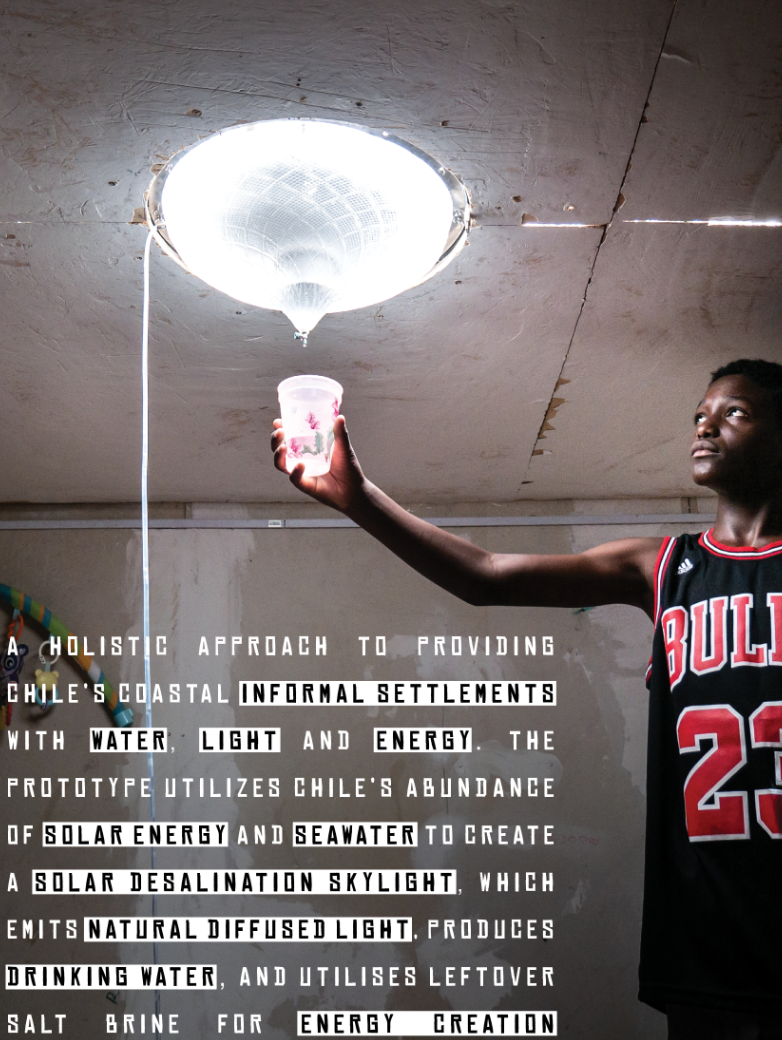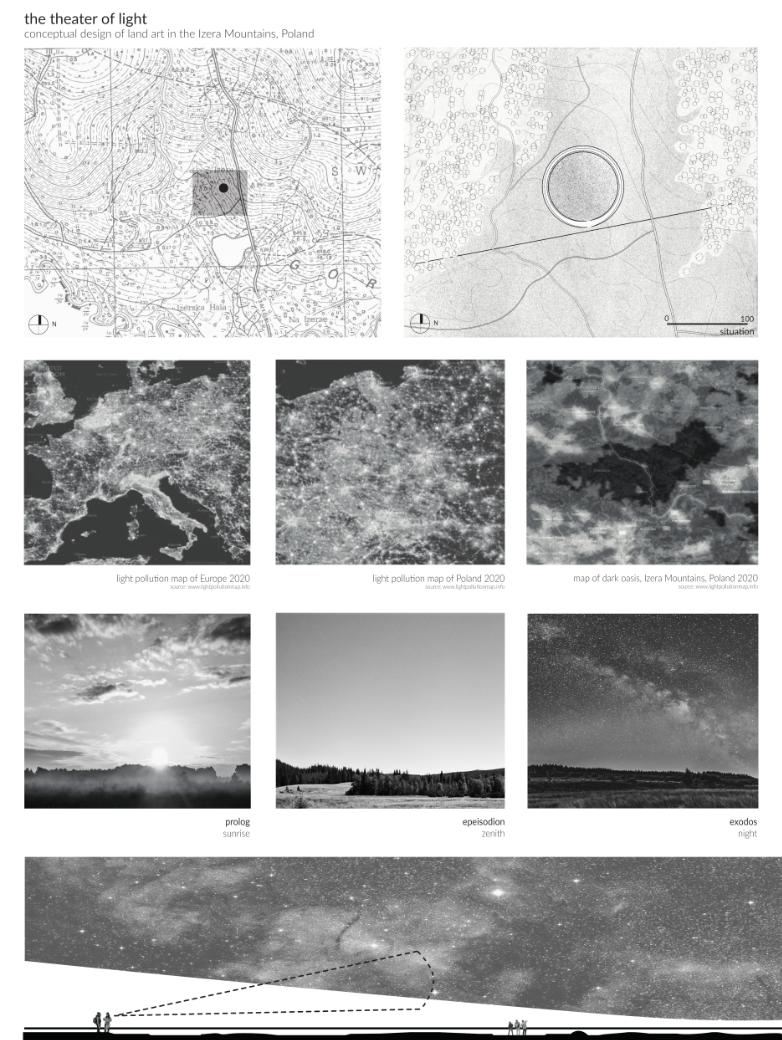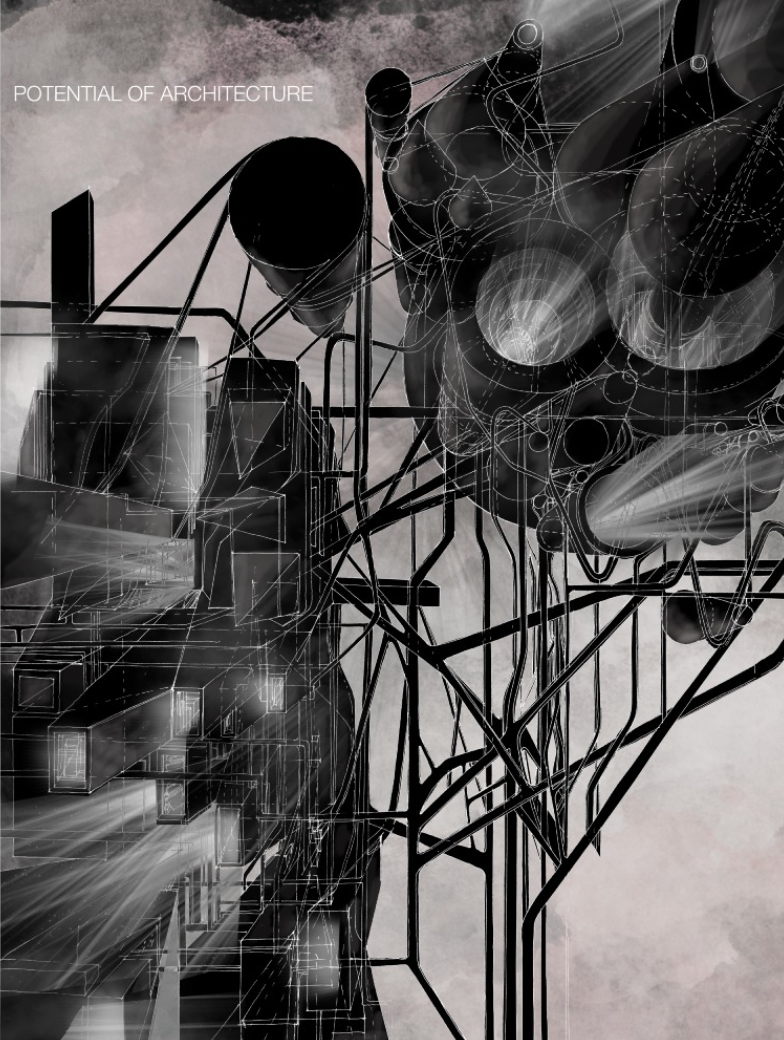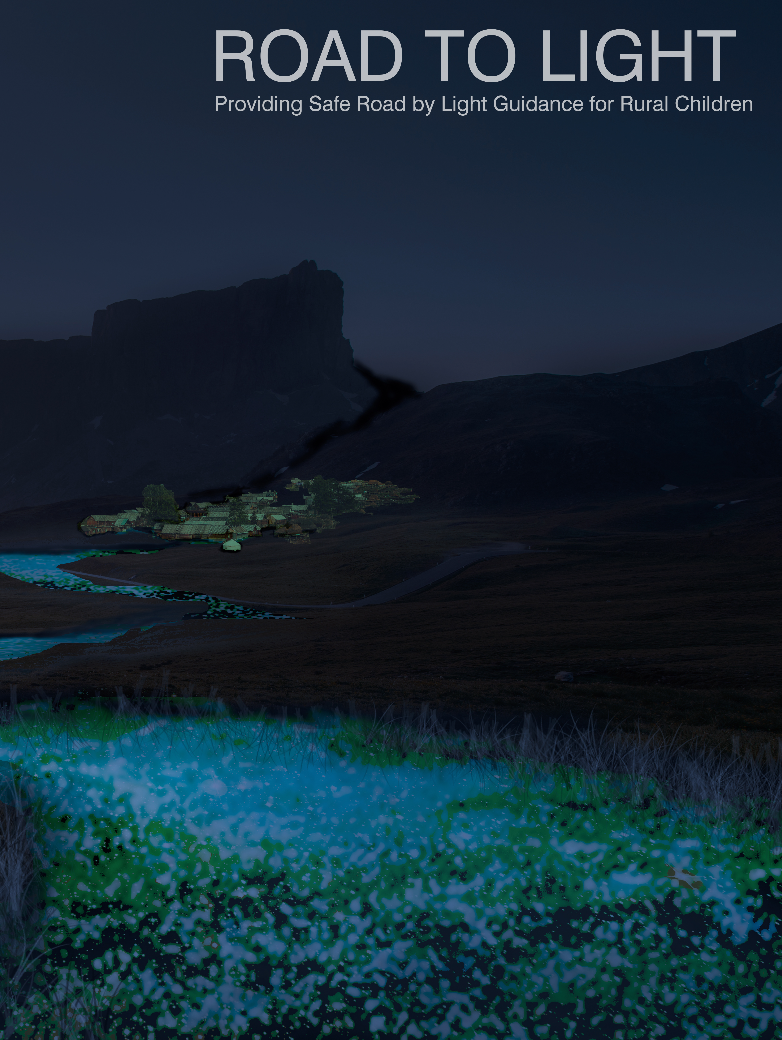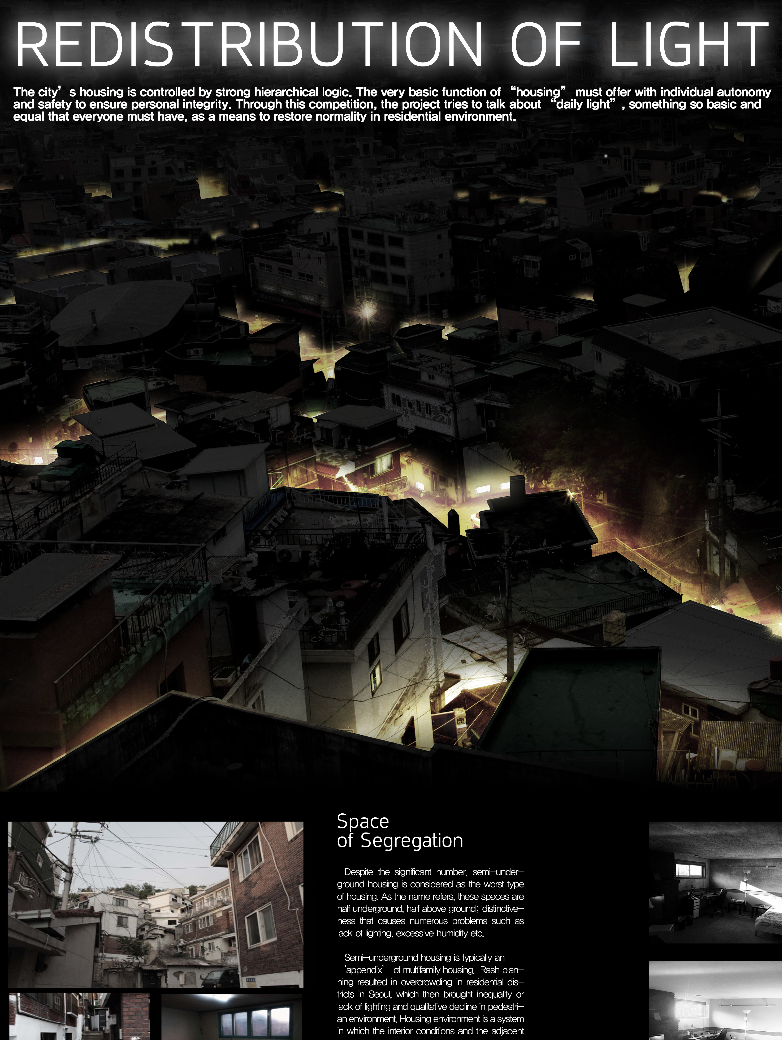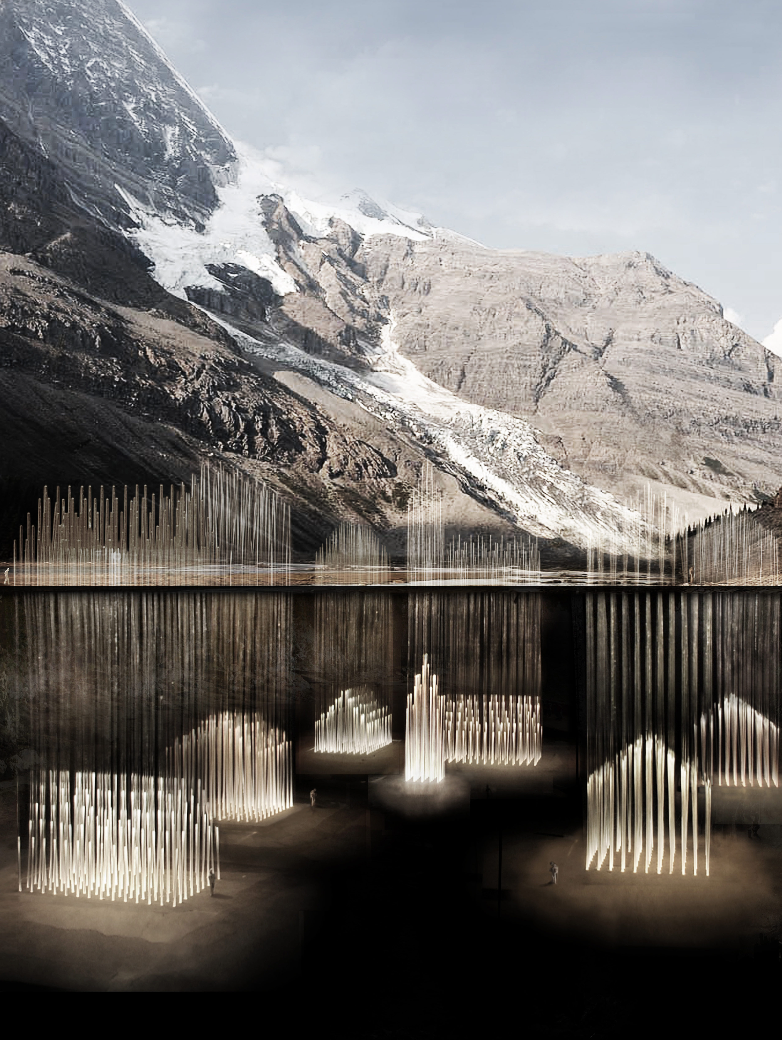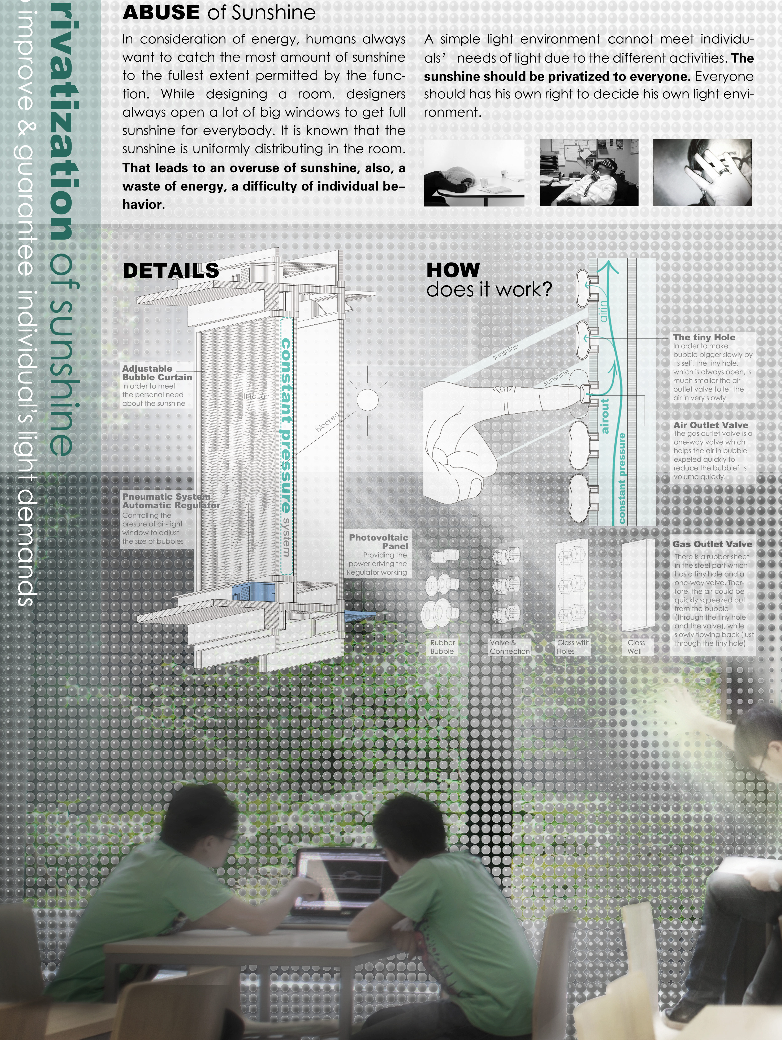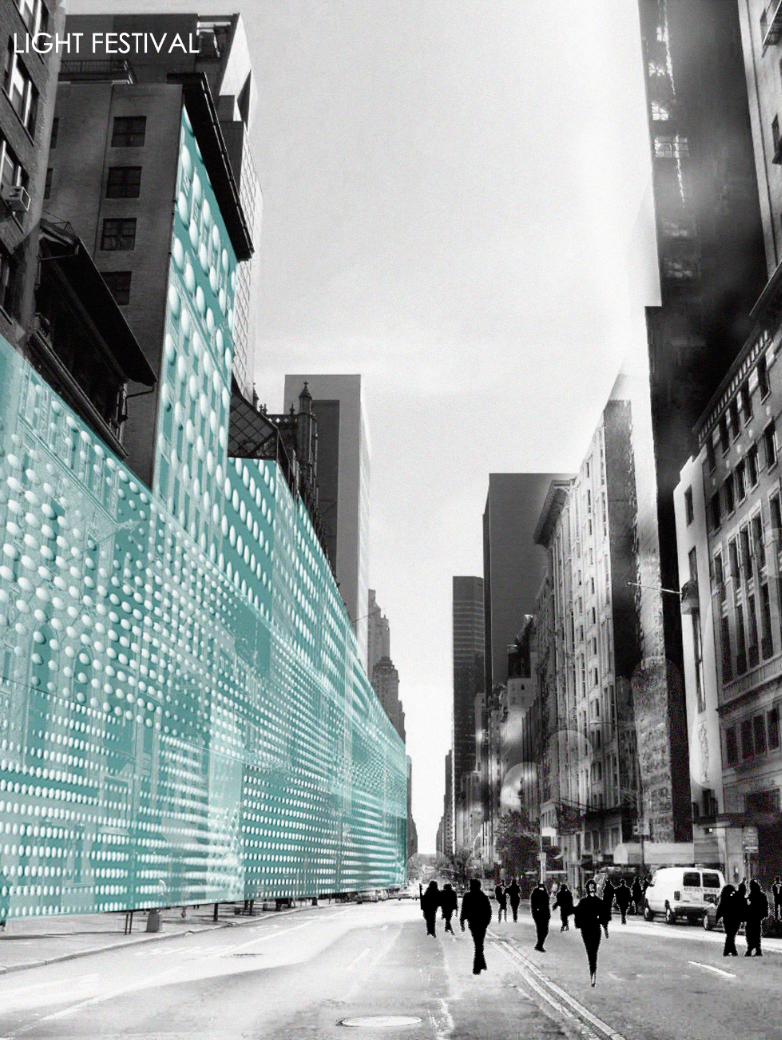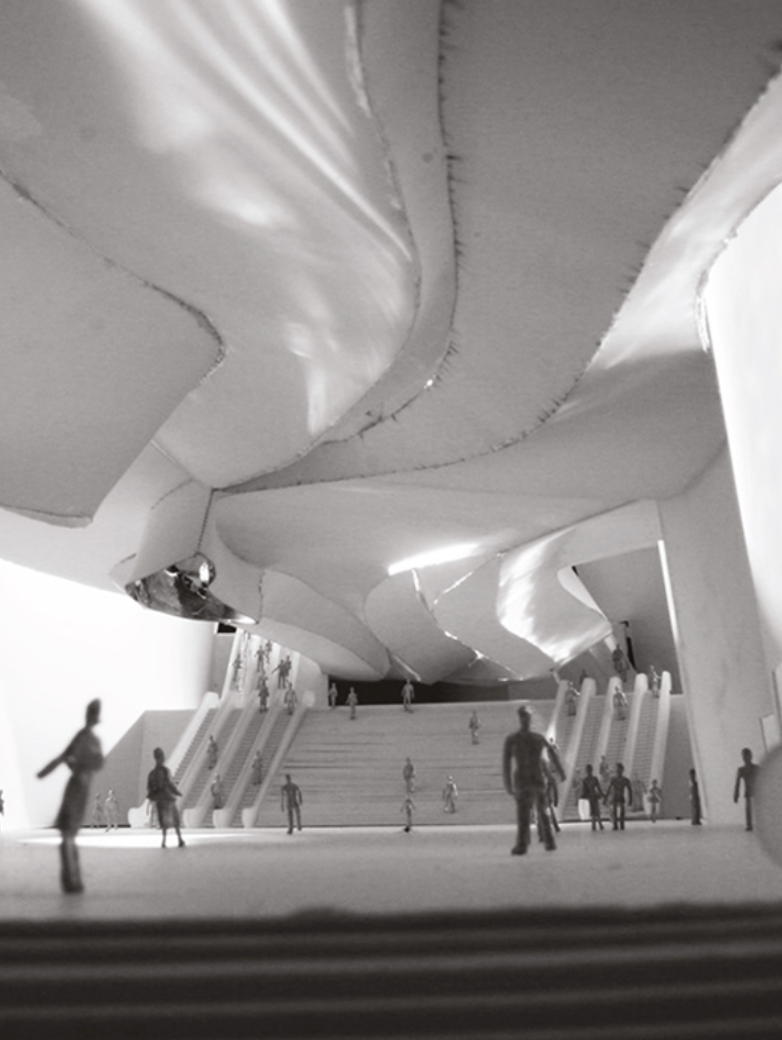2024 -FeatherGuard

Category
Daylight In Buildings - Region 3: The Americas
Students
Yining Ma
Teacher
Myrna Ayoub
School
University of California, Berkeley
Country
United States
Download
Download project board ↓
The tragedy at McCormick Place Lakeside Center serves as a stark reminder of an unseen danger: the very glass facades we design to harmonize with nature and light can become lethal traps for birds. During the day, the reflective properties of glass create a deceptive illusion of natural habitat. Birds in flight see these reflections—false images of sheltering environments— and instinctively aim to reach them, often resulting in fatal collisions. At night, artificial lights emanating from the glass structures attract birds, exacerbating the risk. This particular site is situated along a major migratory route, home to numerous waterfowl. The dense woodland adjacent to the glass facade further misleads birds, leading to tragic misjudgments and collisions.
Common solutions involve printing or spraying small patterns on glass to make it more visible to birds or converting mirror-like reflections to diffused reflections using textured surfaces. Our proposal builds on these existing measures by introducing a variable system that reduces the environmental reflection effect of glass during the day to adapt to different activities, while at night, foldable panels with opaque patterns can block artificial light.
Most collisions occur during the day or just before dawn, as migratory birds, having flown throughout the night, look for places to land and replenish energy. Those that land within or near urban areas often find themselves in a deadly maze of glass. To address this, we propose a foldable, detachable, modular transparent external facade system. The lower section features lightweight glass with dot patterns to ensure birds can recognize the presence of glass. The upper section has an opaque coating. This system operates in three modes.
In Day Mode, the facade modules expand horizontally, spreading the dot patterns across the glass surface. This configuration maximizes the visibility of the patterns to birds, providing partial shading for the building’s interior. The expanded dot patterns help birds detect the glass, thereby preventing collisions. This mode is designed for normal daytime operations, balancing the need for natural light inside the building with the safety of birds outside.
In Event Mode, the modules fold vertically to their original position, providing a clear, unobstructed view. During large events, this mode maintains the transparent and open aesthetic of the building. Vertical elements of the folded modules provide some visibility to birds, reducing the risk of collision. Additionally, auditory deterrents can be used to enhance bird safety, and the noise and bright lights of large events help to keep birds away. This mode is ideal for occasions when the building hosts large gatherings and requires an open, inviting appearance.
In Night Mode, the upper opaque sections of the modules fold down to cover the glass facade, blocking interior light from escaping. This configuration prevents indoor light from attracting birds during nighttime, reducing the risk of nocturnal collisions. The opaque coating on the upper sections not only blocks light but also provides an additional layer of insulation, contributing to the building’s energy efficiency. This mode is particularly useful during the night when artificial lights inside the building could otherwise draw birds towards the glass.
The Feather Protector Facade System represents a flexible and effective solution to reduce bird collisions with glass facades. By combining lightweight glass with dot patterns and opaque coatings in a modular, foldable system, it addresses the issue of bird collisions while maintaining the aesthetic and functional needs of the building. This design adapts to various activities and times of day, ensuring a safe and harmonious coexistence between human structures and avian wildlife.
